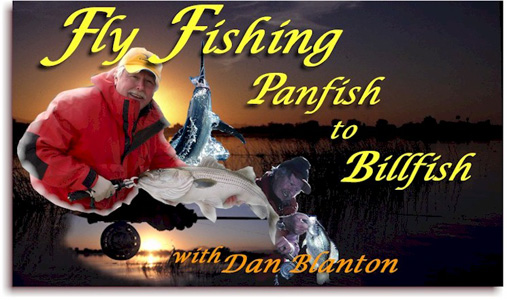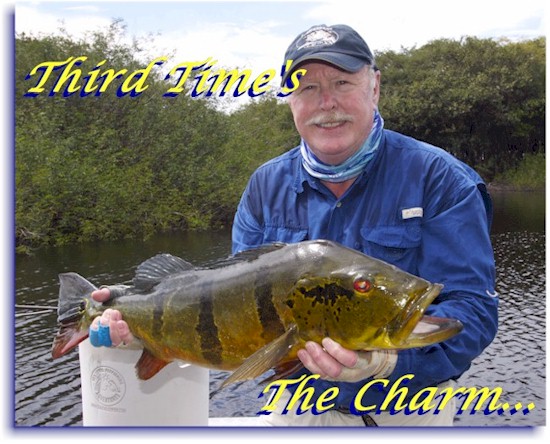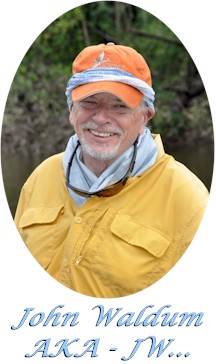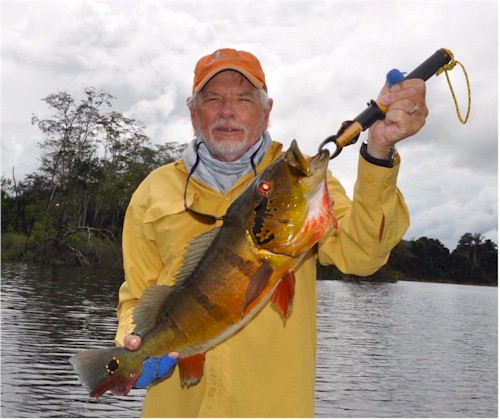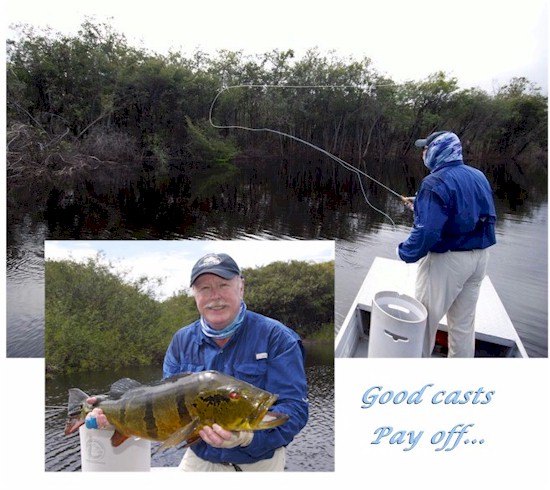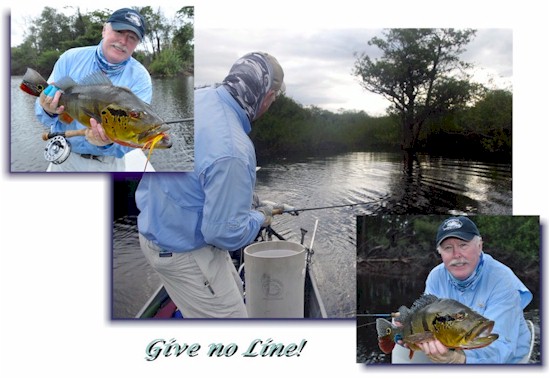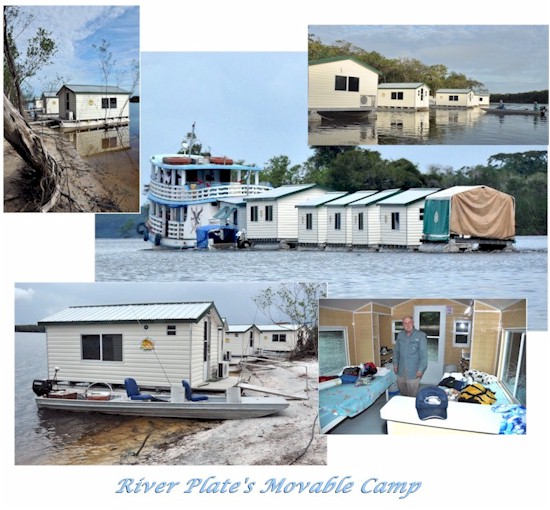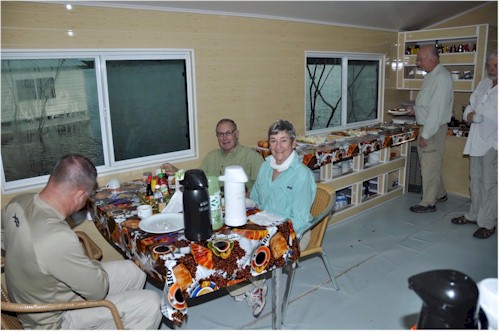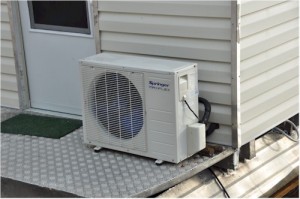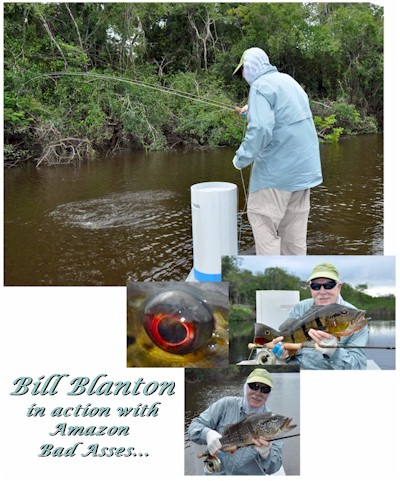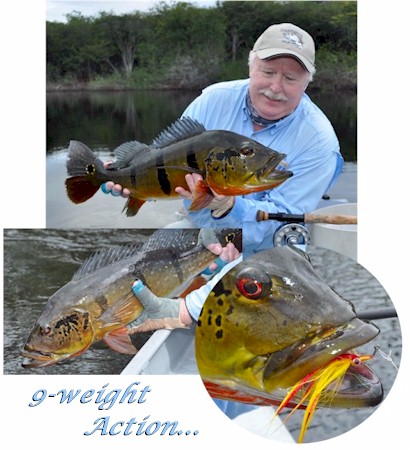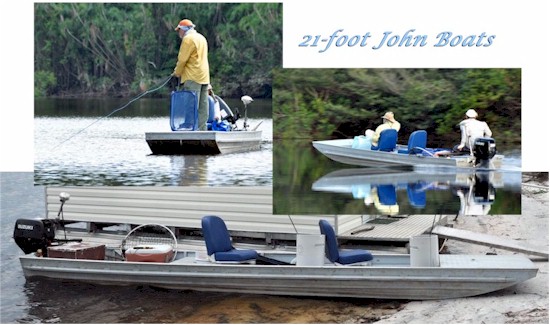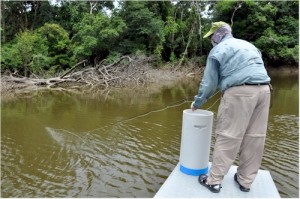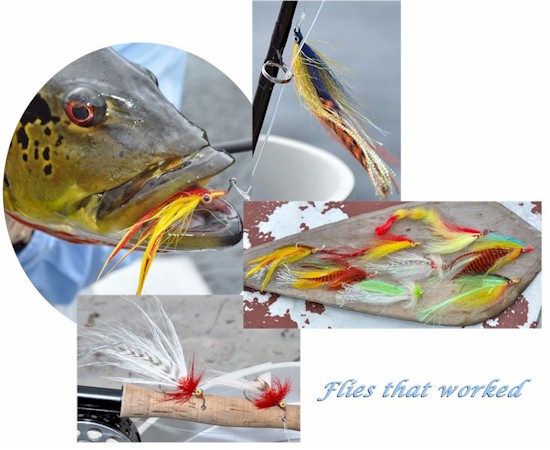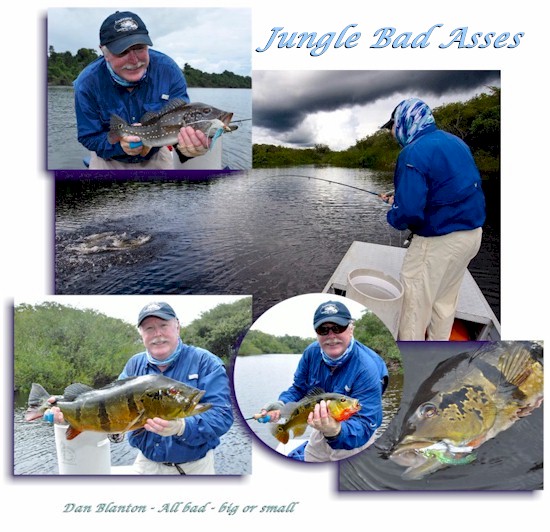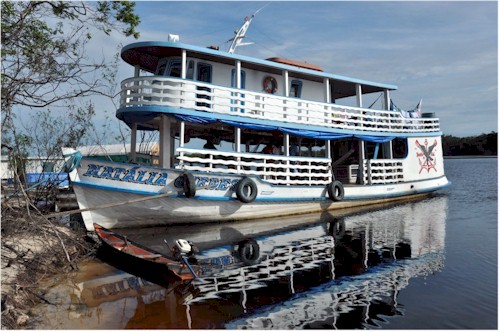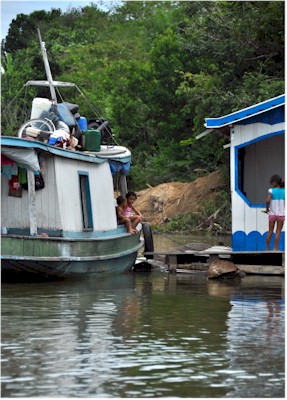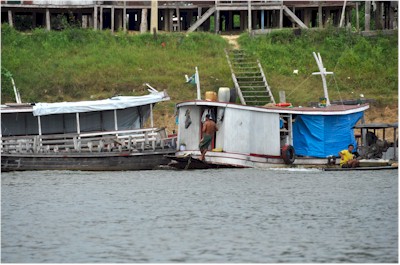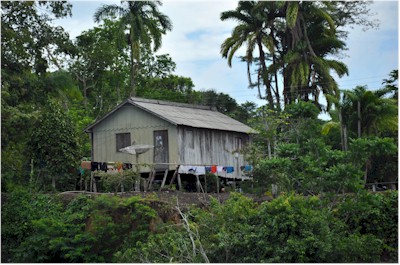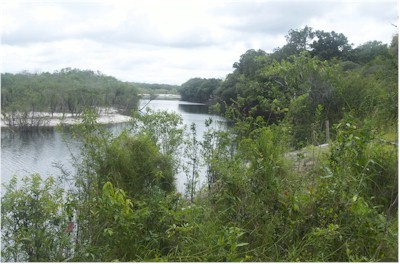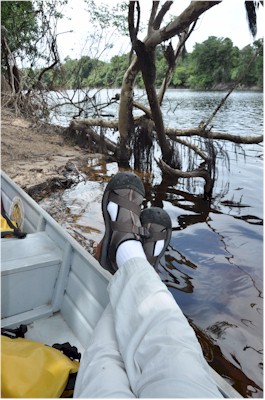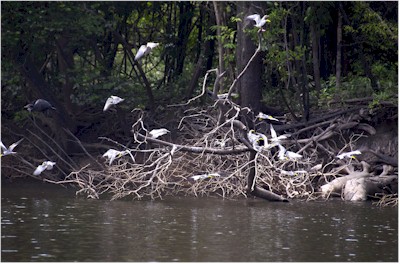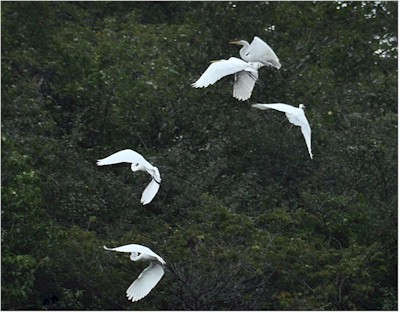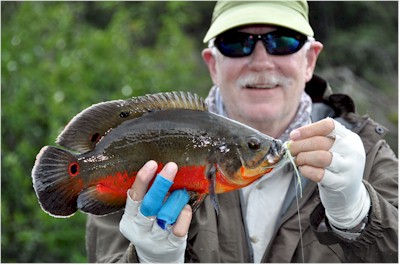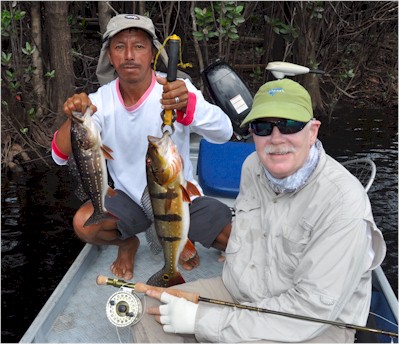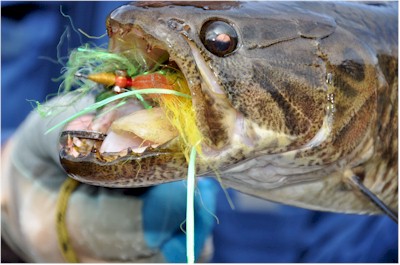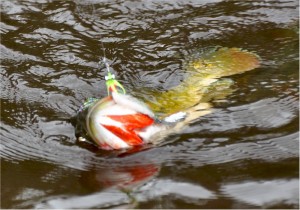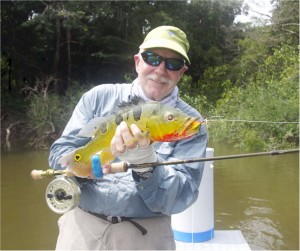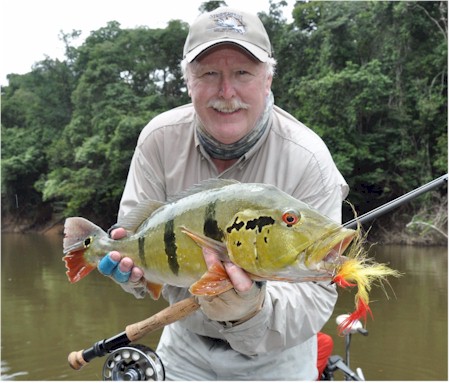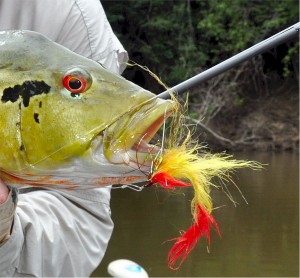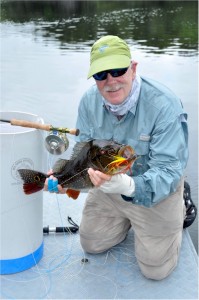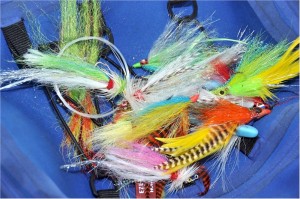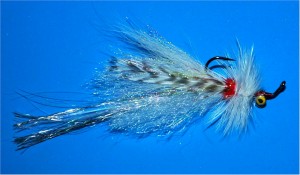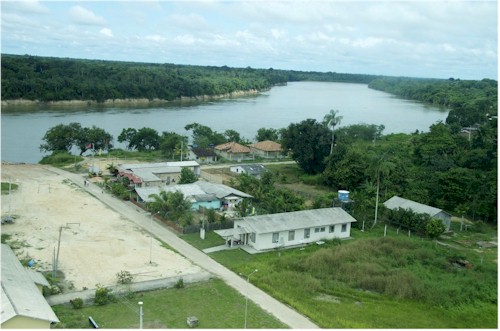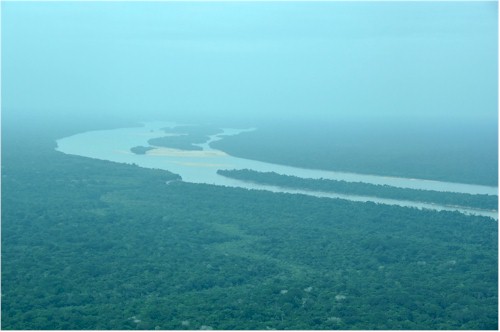The Third Time’s the Charm
Peacock Bass in the Brazilian Jungle with River Plate
By Dan Blanton
Well, it took two years after our original booking date to get there – Where? The Brazilian jungle and peacock bass with world-renowned remote camp operator, River Plate. We had first scheduled a departure date in January of 2011 but were cancelled because the river banks were overflowing into the jungle a half mile from unprecedented rainfall. We rescheduled to March same year and again were cancelled the night before departure, bags packed, and drooling to get going – high water again. River Plate gave us a full credit for the coming year. They are extremely honorable folks.
What a let down – a serious heartbreaker for all in our group of eight anxious anglers. Only three of our group had ever fished the Amazon for peacock bass before; Keith Kaneko of Angling on the Fly travel and the Leonard boys – father and son, John and Jon. Actually there would be five Johns in our camp when we finally made it there: John Waldum (JW); John Franzia (Franzia) and his wife Mary Lynne; John Leonard; Jon Leonard and our camp host, John Silvia. I called Jon Leonard “Little Jon” just to help keep things straight. JW just fit JW…
We had a wonderful group of people who all got along splendidly. It couldn’t have been a better assembly if they had been picked by Dr. Phil.
The first leg
Our last and final re-booked date was to depart Miami International on TAM airways, January 13, 2012 (a Friday) – good thing I’m not superstitious…
We arrived at the Manaus International airport right on schedule and after a slow time getting through immigration and customs, we were met by River Plate owner, Luis Brown and his superb transfer people. After introductions and a bit of a wait until all of us had our luggage and were re-grouped, we were transferred by van to the Five-Star, Cesar Hotel; and believe me, it was 5-star, with a marvelous staff, excellent rooms and a wonderful restaurant. The entire River Plate operation and its logistics is nothing but first class – but I knew that already from reports I’d read; and from anglers I’d spoken with about their operation over the years. Now I was there with partner Bill Blanton to witness it first hand and to be able to heartily confirm that everything I’d heard and read about the operation was true.
As the old saying goes “The third time is the charm” and all went off with out a hitch this time – well with almost no hitches – nothing to obsess over anyhow.
Reports were that the water was still a bit high in the river system we were scheduled to fish; but with luck, it would drop and we’d experience good opportunity; hopefully, good fishing. Suffice it to say:
We SLAMMED THEM!
About the fish and the fishing
As it turned out there were only 7 out of 8 scheduled people in our group since Keith Kaneko had to cancel for personal reasons. There was one couple with us, the Franzia’s, John and Mary Lynne. Mary 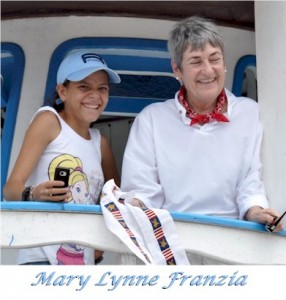 Lynne was our camp morale booster and official “happenings” photographer. Mary Lynne didn’t fish; which reduced our total rod-wavers to six. In just 6-1/2 days of hard-ass fly fishing, we landed more than 900 fish (the guides are required to keep accurate daily counts with clickers). My partner, Coz, Captain Bill Blanton and I landed more than 270 to 14 pounds with lots of 6- to 12-pounders in the mix; and we lost count of the 3- to 5- pounders and smaller, medium-all-purpose fish caught and released, keeping only a few daily to augment camp dinners. Bill’s largest Azul peacock was a bit over 10-pounds and I managed to best a 14-pound Azul. Of the four species of peacock bass: the Azul (or Assu), the Paca, the Butterfly and the Popoca, the Azul grows the largest – but the Paca might be meaner for its size, somewhat like a smallmouth bass, often preferring moving water.
Lynne was our camp morale booster and official “happenings” photographer. Mary Lynne didn’t fish; which reduced our total rod-wavers to six. In just 6-1/2 days of hard-ass fly fishing, we landed more than 900 fish (the guides are required to keep accurate daily counts with clickers). My partner, Coz, Captain Bill Blanton and I landed more than 270 to 14 pounds with lots of 6- to 12-pounders in the mix; and we lost count of the 3- to 5- pounders and smaller, medium-all-purpose fish caught and released, keeping only a few daily to augment camp dinners. Bill’s largest Azul peacock was a bit over 10-pounds and I managed to best a 14-pound Azul. Of the four species of peacock bass: the Azul (or Assu), the Paca, the Butterfly and the Popoca, the Azul grows the largest – but the Paca might be meaner for its size, somewhat like a smallmouth bass, often preferring moving water.
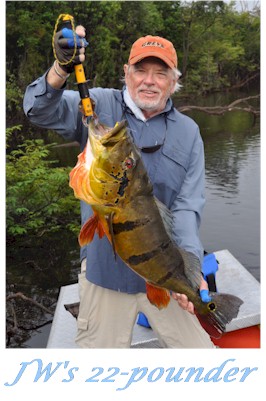 The largest fish of the week went to JW (John Waldum) with a 22-pounder; his second gargantuan, an 18-pounder. He also got his clock cleaned by a monster that got into his backing about a hundred yards breaking off his entire fly line around a bloody stump or something. There were certainly plenty of those around – lots visible and many that weren’t. We were fishing in hazardous conditions when it came to flies and lines. Everyone in our group though, managed to land double-digit fish, a few teeners.
The largest fish of the week went to JW (John Waldum) with a 22-pounder; his second gargantuan, an 18-pounder. He also got his clock cleaned by a monster that got into his backing about a hundred yards breaking off his entire fly line around a bloody stump or something. There were certainly plenty of those around – lots visible and many that weren’t. We were fishing in hazardous conditions when it came to flies and lines. Everyone in our group though, managed to land double-digit fish, a few teeners.
Casting requirements
Casting requirements and conditions (structure – blow-downs, stumps, brush trees, you name it) demanded extreme accuracy, with both long and short casts and so many of them that we all developed several blisters on our casting hand within the first day-and-a-half. Thank God JW had brought a large bottle of squeeze, instant glue, and the perfect stuff for sealing blisters and cuts after proper cleaning. I had packed a bottle of brush-on Krazy Glue for that express purpose but it never made it to camp – TSA? And, yes, we all wore Armara palmed Sun Gloves – which didn’t provide 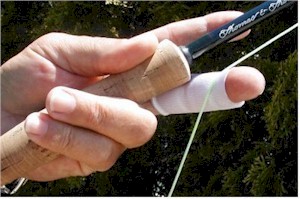 enough protection for our obviously tender casting hands. Thank God for Stripping Guards too – lest we suffered severe finger line burns. Bottom line – if you couldn’t throw tight loops and lots of them, you had better have flies with good snag guards…
enough protection for our obviously tender casting hands. Thank God for Stripping Guards too – lest we suffered severe finger line burns. Bottom line – if you couldn’t throw tight loops and lots of them, you had better have flies with good snag guards…
When you do stick one of these bass-ass-bass it’s a “give-no-line” contest – you win or the fish wins; and they do win often enough; but so did we.
Our final destination
The river we fished was called the Xeriuni, a trib off the Rio Branco which branched from theRio Negro. It took almost two hours in our charter plane, flying over jungle so thick you couldn’t see through the canopy anywhere except when a decent-sized river cut a swath through it. The vastness of the Amazon is truly astounding and from high above it takes on the appearance of a thick, green, impenetrable carpet. We finally landed on a short, grass airstrip at the smallvillageofSanta Maria. There we were met by our guides who led us to transport boats for another two hour ride down the Rio Branco to the Xeriuni and our floating, movable camp. I can’t tell you how happy I was to see the water color change from red/brown to clear tannin and finally to glimpse the camp as we rounded a river bend. “It won’t be long now”, I thought. I didn’t think I could get that excited about fishing anymore.
After a quick lunch, camp orientation and introduction to house staff and guides by host, John Silvia, we headed to our assigned cabins to unpack and rig gear.
Camp Staff – food and other ammenities
From the moment we arrived at Santa Maria and were transferred to the boats for the nearly two-hour down-river run to our floating camp, we knew that we had picked the right outfitter for this adventure. The staff was superlative in every way and the transfer went without a hitch. Once in camp the house staff proved every bit as efficient and affable providing all our needs with a smile. John Silvia couldn’t have had a better staff nor managed the operation more efficiently. Even when we did encounter minor problems they were delt with quickly to our satisfaction.
The food was varied and superb: we ate breakfast and dinner at camp and made our own lunches to take with us each day. Sandwiches made with coconut bread are out-of-this-world! I could rave on about the great food but suffice it to say, you won’t be dissapointed with it.
There was also daily laundry service. Each cabin had a laundry basket to place clothing and used towels in for washing which you found clean and neatly folding on your bed upon returning from the day’s fishing. This service means you don’t need to pack nearly as many clothes which helps reduce luggage weight which is restricted to about 35- to 40-pounds, total.
Love the AC: did I mention each cabin has its own AC unit to keep you cool and comfortable – yes indeed they do and that in itself is just another one of the miracles of this operation so deep in the Amazon jungle.
Guides and gear
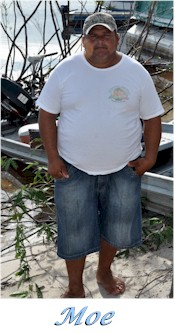 Our guide the first day was called “Moe” and he was a BIG boy; head guide and ran the camp maintenance and overall operation. He was a superb guide and was incredibly fly-savvy. All the guides were. It didn’t take Bill and me long to rig three rods each: a floater, intermediate and fast-sinker. The floaters and I-lines were Rio Tropical Outbound Short lines in 9- and 10-weights. Quigley twisted leaders were looped on the line-loop and a tippet of straight 40-pound about 4 feet long was decided best choice for surviving wood and other line-severing obstructions, plus twisted leaders provided stretch for shock absorption – the hell with IGFA 20-pound… Moe found us fish right away and Bill was the first to score with both Paca and Azul.
Our guide the first day was called “Moe” and he was a BIG boy; head guide and ran the camp maintenance and overall operation. He was a superb guide and was incredibly fly-savvy. All the guides were. It didn’t take Bill and me long to rig three rods each: a floater, intermediate and fast-sinker. The floaters and I-lines were Rio Tropical Outbound Short lines in 9- and 10-weights. Quigley twisted leaders were looped on the line-loop and a tippet of straight 40-pound about 4 feet long was decided best choice for surviving wood and other line-severing obstructions, plus twisted leaders provided stretch for shock absorption – the hell with IGFA 20-pound… Moe found us fish right away and Bill was the first to score with both Paca and Azul.
I chose a TFO 10-weight Baby Blue for a primary rod although I brought along two 9-weight sticks: an Orvis Helios and one of Sea Level FlyFishing’s new “Stealth” rods. After a half day of swinging the BB, developing several blisters on my casting hand and straightening three jig hooks on three bruiser fish, I made the switch to the Stealth 9 with a 435 grain intermediate and stayed with it the rest of the week. It cast, fished and fought those critters brilliantly; I fell in love with that rod. The reel happened to be a Sage 3400D but that was inconsequential – we never played a single fish off the reel all week. There was no point in it once we hauled them out of the sticks; the fight was pretty much over by then.
In retrospect I wouldn’t take any 10-weight rods for this fishing. Strong 9-weights with guts for pulling hard but with a tip for extremely accurate casting – lots of casting from 40 to 80 feet – will suffice; and you won’t destroy your hand, arm and rotator cuff. Some of our folks did break rods but all admitted to making angler errors, usually high-sticking. Bring at least three, better four rods if you make this trip. Reels should hold the appropriate line but should also be light. Beefy drags are not required from what I could tell; but one trip certainly doesn’t make me an expert.
As for fly lines: from what I learned, I wouldn’t even take a floating line next trip because I found I could cast both subsurface flies and poppers/sliders/darters and fish them properly with the ROS Tropical Intermediate. The big poppers and Pole Dancers could be cast much easier with the I-line, than with a fat floater – just something to think about. I would take a fast-sinking line of some kind just in case although Bill and I never needed one.
Boats
The boats we fished from were well-appointed 21-foot, fairly narrow, aluminum John Boats powered by fast 35 hp outboards and controlled with good electric motors that always worked – all day long! The skiffs felt a little tippy at first but you soon got your “legs”. Wider boats wouldn’t be able to snake through the many narrow, wood-choked creeks, water pathways to productive open bays and slow moving branches of the Xeriuni. The skiffs were fast, well-suited for the job and I found them perfect platforms. Bill and I would take turns fishing from the bow platform, alternating each day.
Line management devices – Stripping tubs
Bill and I both brought our Sea Level foam travel stripping buckets with us for line magagentment control. They were invaluable, preventing line tangles; providing a third hand by acting as a rod holder when handling fish for photograpsh; and allowing us to run from spot to spot whithout having to reel up our line. I have often said that I would never travel to any angling destination without one of these stripping tubs; and I don’t. If you plan on doing this trip I highly recommend that you get one of these line management devices (LMDs). They only weight 2-1/2 pounds so the additional luggage weight is inconsequential. Just pack the tub full of your stuff and place it in your duffel.
Flies
I got advice on all the hot peacock bass flies and I had the bases covered. Between Bill and me we could have supplied the entire camp with flies and a fly shop or two. I caught fish on every fly I showed them; but some did produce better than others. Pelado flies, sparse with a red tail worked very well as did any fly with lots of yellow/red/orange and orange/griz in it. Bill hammered them on a slim version of Rob Anderson’s “Reducer” fly. Bill’s version was more “Deceiver-like” and not as full as Rob’s.
I did well on a red FT Pelado. They loved it; but so did the piranha, which chomped the Flashtail off; but not before I landed a good number of fish on one. I also slew them one afternoon on my old FT White Whistler Grizzly tied on a jig hook. Of course I just had to catch my first peacock bass on a Whistler and I did it with the classic FT red/white/griz. FT Clousers scored well too, especially in white/chart with a chartreuse pearl Flashtail. I tied some Pelado flies using yellow brush tails with a flame tip made for me by Pat Dunlap of Cascade Crest Tools. The big Peacocks loved those, including a couple of Faux Fur flies Pat sent me to try. Anyhow, they are not too particular if you can get the beef through the doorway and into the dining room.
Most of my flies were tied on 3/0 Targus 9413 jig hooks; some on the old EC413 and some were on 600s J hooks. I like the jig hooks better and the only three that opened on me were the ones I pried open using the beefy 10 with the electric motor in full reverse. Next time I might go with 4/0s.
Use strong hooks!
Overall, fishing for Amazon peacock bass with River Plate was a marvelous experience, one I’ll never regret having done. I’d do it again in a heartbeat! There is no other fish that hits a fly (except for maybe a New Guinea Bass) harder, faster, with more arm-jolting power than a big peacock bass. It’s a give-no-line contest which they often win if you don’t know how to dance the “down and dirty”.
They are the bad asses on the block as my partner, Bill Blanton, described them. They hit hard enough to yank you off the casting deck if you are not paying attention; and if the guide doesn’t put the electric motor full-on in reverse, they’ll pull the skiff into the woods along with you and all your fly line. I can’t recall a more exciting fly-rod quarry I’ve encountered in more than 40 years of angling travel.
If you have been considering a trip toBrazil to fish for peacock bass I highly recommend you’re not wasting more time thinking about it. Book it! Book it with Keith Kaneko’s Angling on the Fly; and insist on River Plate Outfitters. You won’t be sorry – but don’t forget to bring the brush-on Krazy glue…
More photos
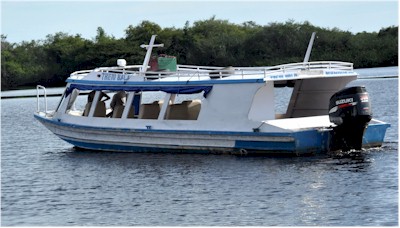 Our boat taxi for return to Santa Maria
Our boat taxi for return to Santa Maria
Happy, healthy kids
Cabin along the river
River View
Lunch break
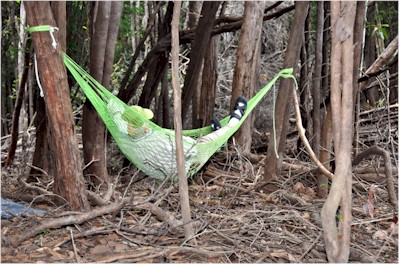 Bill Blanton taking a lunch-time siesta
Bill Blanton taking a lunch-time siesta
Colorful Butterfly bass on FT Whistler
Bill Blanton with a very nice Butterfly bass
Nice Azul on the Faux Fur Pelado
Azul taken on a Faux Fur Pelado Fly
Pelado fly scores another paca
All of these caught peacock bass
Jig Hook FT Whistler that killed them one day
In the air over Santa Maria
Heading back to Manaus
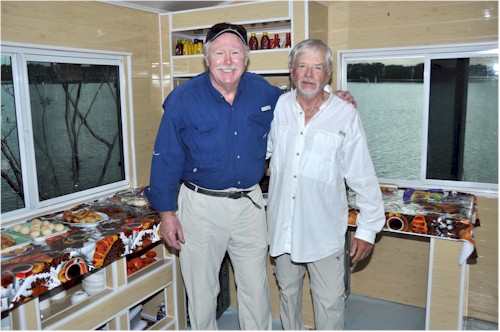 Nothing like a trip with good friends – Dan Blanton and JW
Nothing like a trip with good friends – Dan Blanton and JW
To Book a trip for Jungle Peacock Bass with River Plate go to:
Angling on the Fly – Keith Kaneko
